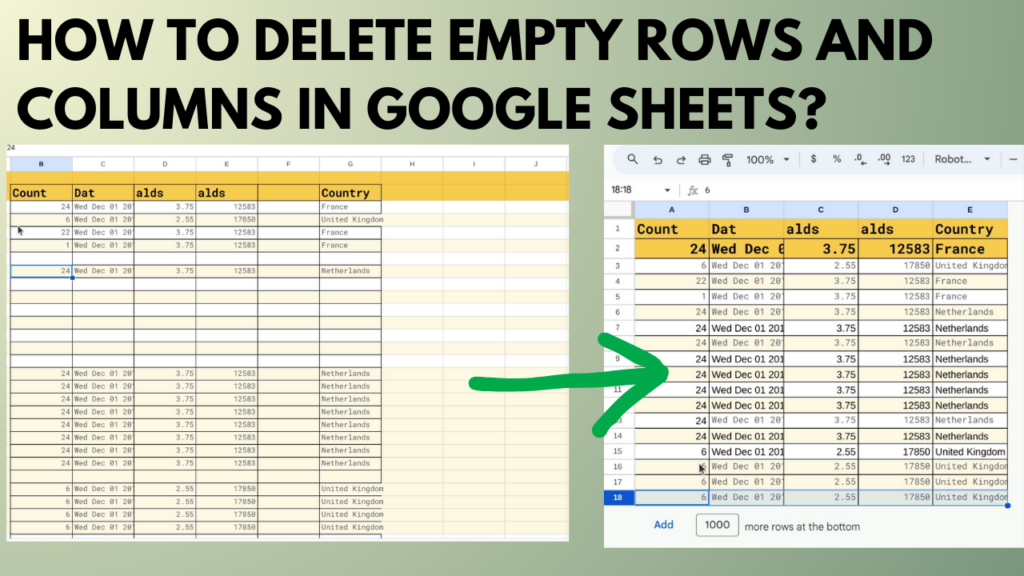The article titled “How to Use GraphQL” by freeCodeCamp.org provides a comprehensive guide on utilizing GraphQL, a query language for APIs and a runtime for executing those queries with existing data. With GraphQL gaining popularity as a powerful alternative to RESTful APIs, this article aims to equip readers with the necessary knowledge and skills to understand and effectively implement GraphQL in their projects. From the basic concepts of GraphQL to advanced techniques and best practices, this article offers a thorough exploration of the topic, ensuring that readers are well-equipped to leverage the full potential of this technology in their development work.

Introduction
GraphQL is a query language for APIs and a runtime for executing those queries with your existing data. It was developed by Facebook to address the limitations of RESTful APIs and provide a more efficient and flexible approach to data fetching and manipulation. With GraphQL, clients can specify exactly what data they need from the server, eliminating over-fetching and under-fetching issues commonly encountered with RESTful APIs.
What is GraphQL?
GraphQL is a query language that allows clients to request specific data from the server. It provides a more efficient and flexible alternative to traditional RESTful APIs. With GraphQL, clients can specify the shape and structure of the response they want, avoiding over-fetching and under-fetching of data.
At its core, GraphQL allows clients to send a query to a GraphQL server, which then returns the requested data in a JSON format. The queries can be nested, allowing clients to fetch related data in a single request. This reduces the number of round trips between the client and server, resulting in improved performance and efficiency.
Unlike RESTful APIs, which expose fixed endpoints and return fixed data structures, GraphQL allows clients to define their own queries and specify exactly what data they need. This makes it easier to evolve and maintain APIs, as changes to the data requirements can be made on the client side without affecting the server implementation.
Why use GraphQL?
There are several reasons why developers choose to use GraphQL over traditional RESTful APIs:
-
Flexibility: GraphQL allows clients to specify exactly what data they need, reducing over-fetching and under-fetching issues commonly encountered with RESTful APIs. This results in faster and more efficient data retrieval.
-
Reduced round trips: With GraphQL, clients can fetch multiple resources in a single request by nesting queries. This reduces the number of round trips between the client and server, improving performance.
-
Strong typing system: GraphQL has a strong typing system that allows clients and servers to communicate effectively. This ensures that clients only request valid data and that servers only return the requested data.
-
Evolutionary API design: GraphQL allows for incremental changes to the data requirements without affecting the client implementation. This makes it easier to evolve and maintain APIs over time.
-
Tooling support: GraphQL has a wide range of tools and libraries available, making it easier to develop and test applications. These tools provide features such as code generation, type validation, and performance monitoring.
Overall, GraphQL offers a more efficient and flexible approach to data fetching and manipulation, making it a popular choice among developers.
Getting Started with GraphQL
Installation
To get started with GraphQL, you’ll need to install the necessary dependencies. This typically involves installing a GraphQL server library, such as Apollo Server or GraphQL Yoga, and any additional dependencies required by the server or your development environment.
Setting up a GraphQL Schema
Once you have the necessary dependencies installed, you can start setting up a GraphQL schema. The schema defines the types of data that can be retrieved and modified using GraphQL. It specifies the available queries, mutations, and subscriptions, as well as the structure of the data that can be returned.
Defining Types
In GraphQL, types are used to define the shape and structure of the data. You can define custom types that represent your data model, as well as scalar types such as Integer, String, Boolean, and ID. Types can have fields that represent the properties of the data and relationships to other types.
Creating Resolvers
Resolvers are functions that handle the execution of GraphQL queries and mutations. They are responsible for fetching the requested data and returning it to the client. Resolvers can be written in any programming language and can make use of any data source, such as a database or an external API.
Start the GraphQL Server
Once you have defined the schema and implemented the resolvers, you can start the GraphQL server. This will make your GraphQL API available for clients to interact with. The server typically listens for incoming requests and executes the corresponding resolvers to retrieve the requested data.

Working with Queries
Basic Query Syntax
In GraphQL, queries are used to retrieve data from the server. Queries can be written in a concise and intuitive syntax that allows clients to specify exactly what data they need. The basic syntax of a query consists of a query keyword followed by the fields to be included in the response.
Query Variables
Query variables are used to pass dynamic values to GraphQL queries. They can be used to filter data, paginate results, or provide input for mutations. Query variables are defined in the query operation and can be referenced within the query body.
Query Fragments
Query fragments are reusable pieces of query syntax that can be included in multiple queries. They allow clients to define a set of fields that can be shared across different queries, reducing duplication and improving maintainability.
Nested Queries
In GraphQL, queries can be nested to fetch related data in a single request. This allows clients to retrieve complex data structures with a single query, eliminating the need for multiple round trips between the client and the server.
Aliases
Aliases are used to rename the fields in a query response. They allow clients to specify a different name for a field in the response than the one defined in the schema. Aliases can be useful when multiple fields with the same name are included in a query.
Mutations
Creating Data
Mutations are used to modify data on the server. They allow clients to create, update, and delete data using a concise and intuitive syntax. Mutations can include input arguments to provide the necessary data for the operation.
Updating Data
Updating data in GraphQL is straightforward and follows a similar syntax to creating data. Clients can specify the fields to be updated and the new values for those fields. The server will execute the mutation and return the updated data if requested.
Deleting Data
To delete data in GraphQL, clients can use mutations with a delete operation. The mutation can specify the identifier of the data to be deleted and any additional arguments required for the operation. The server will execute the mutation and return the status of the operation if requested.

Schema Design
Defining Types
When designing a GraphQL schema, it’s important to define the types that represent your data model. Types should be defined based on the entities and relationships in your domain, and should accurately reflect the structure of your data.
Type Relationships
Types in GraphQL can have relationships with other types. These relationships can be one-to-one, one-to-many, or many-to-many. By defining relationships between types, you can model complex data structures and fetch related data in a single query.
Input Types
Input types are used to provide input arguments to mutations. They allow clients to pass data to the server in a structured and typed manner. Input types can be defined based on the specific data requirements of each mutation.
Interfaces and Unions
Interfaces and unions are used to define polymorphic types in GraphQL. Interfaces define a set of common fields that a type must implement, while unions define a set of types that can be used interchangeably. Interfaces and unions allow for more flexibility in defining types and handling polymorphic data.
Directives
Directives are used to provide additional instructions to the GraphQL execution engine. They can be used to conditionally include or exclude fields, modify the behavior of fields, or apply transformations to the input arguments. Directives can be defined in the schema and used by clients in their queries and mutations.
Authentication and Authorization in GraphQL
Authentication
Authentication is the process of identifying and verifying the identity of a client. In GraphQL, authentication can be implemented using various mechanisms, such as JSON Web Tokens (JWT), OAuth, or custom authentication strategies. Once a client is authenticated, they can include an authentication token in their requests to access protected resources.
Authorization
Authorization is the process of determining whether a client has the necessary permissions to access a resource. In GraphQL, authorization can be implemented using custom authorization logic or by integrating with existing authorization frameworks. Authorization checks can be performed at the resolver level or at the schema level, depending on the complexity of the access control requirements.

Pagination and Caching
Pagination
Pagination is used to limit the amount of data returned in a single query and provide a mechanism for fetching additional data. In GraphQL, pagination can be implemented using cursor-based pagination or offset-based pagination. Clients can request a specific number of items and provide cursors or offsets to navigate through the result set.
Caching with GraphQL
Caching is an important technique for improving the performance and scalability of GraphQL APIs. By caching the results of queries, clients can avoid unnecessary round trips to the server and fetch data from a local cache. Caching can be implemented at various levels, including the client, server, and CDN.
GraphQL Best Practices
Designing Fetching Logic
When designing a GraphQL API, it’s important to optimize the fetching logic to ensure efficient data retrieval. This involves carefully defining the schema, using query fragments and nested queries, and avoiding over-fetching and under-fetching of data.
Avoiding Over-fetching and Under-fetching
Over-fetching and under-fetching are common issues in API design that can lead to performance problems. GraphQL helps mitigate these issues by allowing clients to specify exactly what data they need. By carefully defining the schema and designing queries to fetch only the required data, you can avoid over-fetching and under-fetching problems.
Optimizing Queries
To optimize GraphQL queries, you can use techniques such as batching and parallelization. Batching involves combining multiple queries into a single request, reducing the number of round trips between the client and the server. Parallelization involves executing multiple queries concurrently, further improving performance.
Error Handling
GraphQL provides a standardized way of handling errors in queries and mutations. Errors can be returned in the response alongside the requested data, allowing clients to easily handle and display error messages. It’s important to handle errors gracefully and provide informative error messages to clients.
Versioning the GraphQL Schema
As your GraphQL API evolves, it’s important to version the schema to ensure backward compatibility. Versioning allows you to introduce changes to the schema without breaking existing clients. You can version the schema by explicitly naming and exposing different versions, or by using techniques such as deprecation and introspection.
In conclusion, GraphQL is a powerful query language that offers a more efficient and flexible approach to data fetching and manipulation. By following best practices and utilizing the features and tools provided by GraphQL, developers can create scalable and maintainable APIs that meet the evolving needs of their applications.

